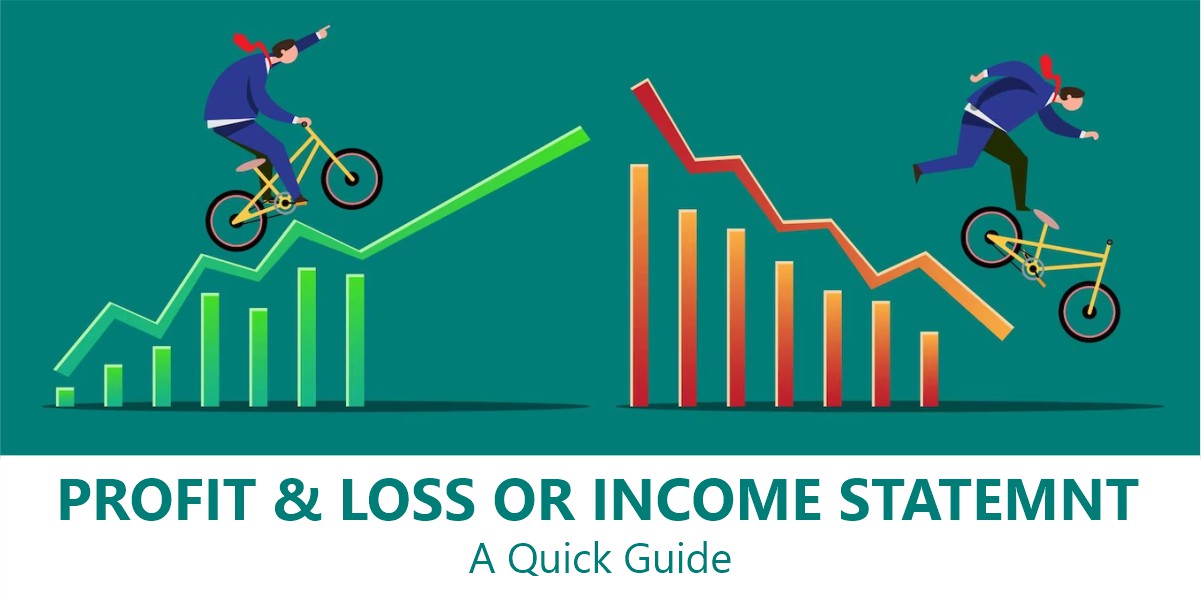What is the profit and loss table or income statement
An income statement, commonly referred to as a profit and loss statement, is a financial document that details a company’s sales, expenses, and consequent profits or losses for a certain period (e.g. a quarter or a year). Typically, the income statement comprises the following sections:
Revenue: The total amount of money a corporation has earned from its principal business activity. This can include money from the sale of goods or services, interest, and other sources.
Cost of goods sold (COGS): refers to the direct expenses connected with the production and sale of a company’s products or services. This can include supplies, manpower, and manufacturing overhead.
Gross profit: The amount of money a corporation has left over after subtracting COGS from revenue.
Operating expenses: The costs a company incurs while running its day-to-day operations. This can include salaries, rent, utilities, and marketing expenses.
Operating income: The amount of money a corporation has left over after subtracting operating expenses from gross profit.
Interest expense: The cost of borrowing money, such as the interest on loans and credit lines.
Earnings before taxes (EBT): The amount of money remaining after interest expenditure is subtracted from operating income.
Income tax expense: The amount of money a company owes in taxes based on its EBT.
Net income (or net profit): The final line of a company’s financial statement, representing the amount of money remaining after all expenses and revenue have been deducted.
The profit and loss table is also known as the income statement, which is one of the most essential financial statements for a corporation. It offers an overview of a company’s sales, costs, and expenses within a specified period, usually a quarter or a year. The statement is used to determine a company’s profitability and financial health.
What is the income statement used for
An income statement is used for a variety of purposes, including:
Determining the profitability of a company: The net income or net loss figure at the bottom of the income statement indicates how much money a business has earned or lost during a certain period. This data is used to analyze the overall financial performance of a firm and to compare it to the performance of other companies in the same industry.
Identifying trends: Analyzing income statements over time can assist uncover trends in the revenue, expenses, and profitability of a business. This can help management make more informed judgments on resource allocation and effort concentration.
Planning and budgeting: Companies utilize income statements to help them plan for the future and establish financial objectives. By estimating revenue and expenses for the future year, a business may prepare a budget and ensure it has sufficient resources to reach its objectives.
Making investment decisions: Investors and analysts use income statements to evaluate a company’s financial health and determine whether to purchase, hold, or sell its stock when making investment decisions.
Assessing efficiency: The income statement offers information on the costs associated with operating a firm, which management can use to evaluate the effectiveness of their operations and find areas where costs can be reduced.
Meeting regulatory requirements: Publicly traded corporations are required to file income statements with regulatory authorities such as the SEC to satisfy regulatory requirements.
Overall, the income statement is a vital instrument for businesses and investors to comprehend the financial performance of a firm and make key decisions.
How to develop an income statement
Developing an income statement typically involves the following steps:
Gather financial data: Gather all pertinent financial data, such as revenue, cost of goods sold, operational expenses, and interest expenses, for the period that the income statement will cover.
Identify the format: Choose between a single-step or multi-step structure for the income statement. A single-step income statement just lists revenues and expenses, whereas a multi-step income statement breaks down revenues and expenses into many categories, including gross profit and net income.
Calculate gross profit: To determine gross profit, subtract the cost of goods sold (COGS) from the total revenue.
Calculate operating income: Operational income is calculated by subtracting operating expenses from gross profit.
Calculate pre-tax income: To determine earnings before taxes, deduct interest expenses from operating income (EBT).
Calculate net income: To determine net income, deduct income tax expense from EBT.
Organize the information: Clearly and logically organize the financial data, labelling sections and providing subtotals as needed.
Review and revise: Examine the income statement for completeness and accuracy. Make any necessary edits or revisions.
Describe the revenue statement: As required, provide the income statement to management, investors, and other interested parties.
It’s important to note that the income statement is based on historical data, and it’s a good idea to monitor the income statement regularly and compare it to other data such as the budget and statement from the previous year. This will enable management to recognize trends and make more informed decisions.
How to interpret an income statement
Understanding a company’s financial performance requires examining the various components of an income statement and applying the information to the statement. Consider the following when interpreting a statement of income:
Revenues: Examine the company’s overall revenue and compare it to that of prior periods. Consistent revenue growth is typically indicative of a strong firm.
Gross profit: The gross profit margin (gross profit divided by revenue) is an indicator of the effectiveness of a business’s operations. A higher gross profit margin suggests that the corporation is managing its expenses successfully.
Operating income: Examine the company’s operating income and compare it to that of prior quarters. Consistent growth in operating income is typically indicative of a thriving business.
Net income: Examine the net income of the organization and compare it to past quarters. Consistent growth in net income is typically indicative of a thriving business.
Expenses: Examine the company’s expenses and compare them to those of prior periods. Identify any substantial changes in the expenses, as this may suggest a shift in the company’s operations or strategy.
Return on Equity (ROE): Return on Equity is determined by dividing net income by shareholder equity, and it reflects a company’s profitability and how well it utilizes shareholders’ investments. A high ROE shows that a corporation generates a high return on its shareholders’ investments. A low ROE, on the other hand, may suggest that the company is not successfully utilizing shareholder capital.
Debt-to-equity ratio: The debt-to-equity ratio compares the total debt of a firm to its total equity. A high debt-to-equity ratio may suggest that a corporation has taken on too much dangerous debt.
Dividends: Examine the firm’s dividends; if the company pays dividends, it may indicate that management is optimistic about the company’s prospects.
Compare to industry averages: Compare the company’s financial performance to the averages of its industry to gain a better understanding of how it is performing in comparison to its competitors.
Look for footnotes: Numerous income statements contain footnotes that provide supplementary information about the company’s financial status. To acquire a more complete picture of the company’s finances, be sure to read these footnotes attentively.
Examining a company’s total financial performance, as well as its efficiency, profitability, and solvency is required when reading its income statement. It is essential to remember that the income statement should not be interpreted in isolation but in connection with other financial statements, such as the balance sheet and cash flow statement, as well as any external factors that may be influencing the company’s performance. These statements provide a more comprehensive view of the financial health and activities of a business.
Additionally, it is essential to evaluate the context of the income statement examination. For instance, a company’s net income may be lower in a specific period due to a one-time expense, such as significant litigation, which would not be considered a long-term trend. In addition, it is essential to analyze the income statement of a company over time, as this will allow you to spot trends and patterns that may be useful for forecasting or budgeting.
Furthermore, it is essential to examine the company’s size, industry, and development stage. It is not uncommon for a startup to operate at a loss for an extended length of time, but repeated losses may be cause for concern for an established business.
Conclusion
In conclusion, understanding an income statement demands a comprehensive review of the financial data and evaluation of the company’s overall financial health and performance, in addition to its industry and external factors. To acquire a more comprehensive knowledge of a company’s financial status, it is essential to examine the statement over time and in conjunction with other financial statements. A company’s income statement is a historical view of its financial performance, and it should be used in conjunction with other financial and non-financial data to conduct a full analysis.
Quick Links
Business Plan – Definition, Importance & What is Included
Financial Statements – Types and How To Read Them
Understanding Revenue Assumptions – Its Uses and Application
A Quick Guide to Expenses Assumption – Its Uses, Application and How to Create a Schedule
A Quick Guide to Payroll Expenses
A Quick Guide to Understanding Income Projection
What is Cash Flow – Its uses, importance & how to derive your cash flow statement
An Overview of Balance Sheet Statement & its Function
Breakeven Analysis – A Complete Guide



Leave a Reply